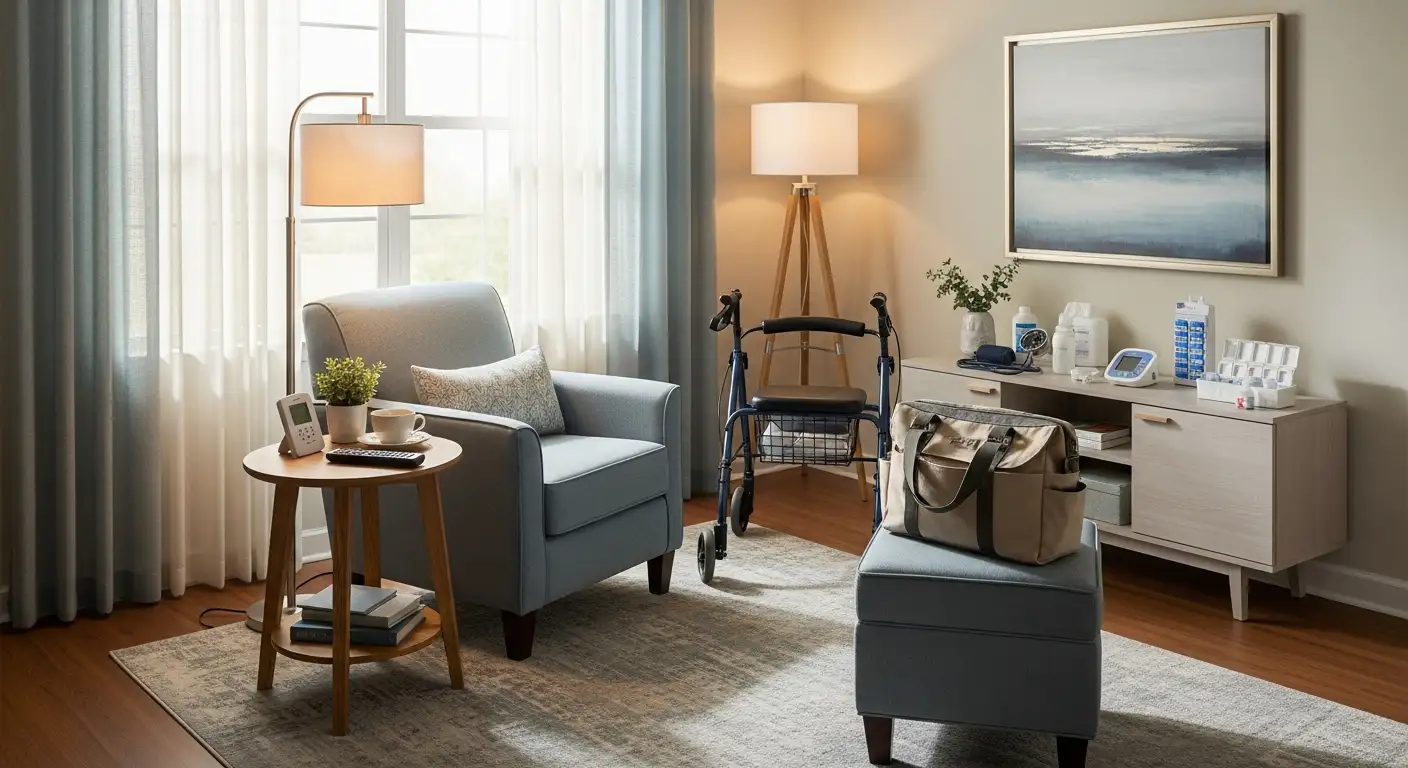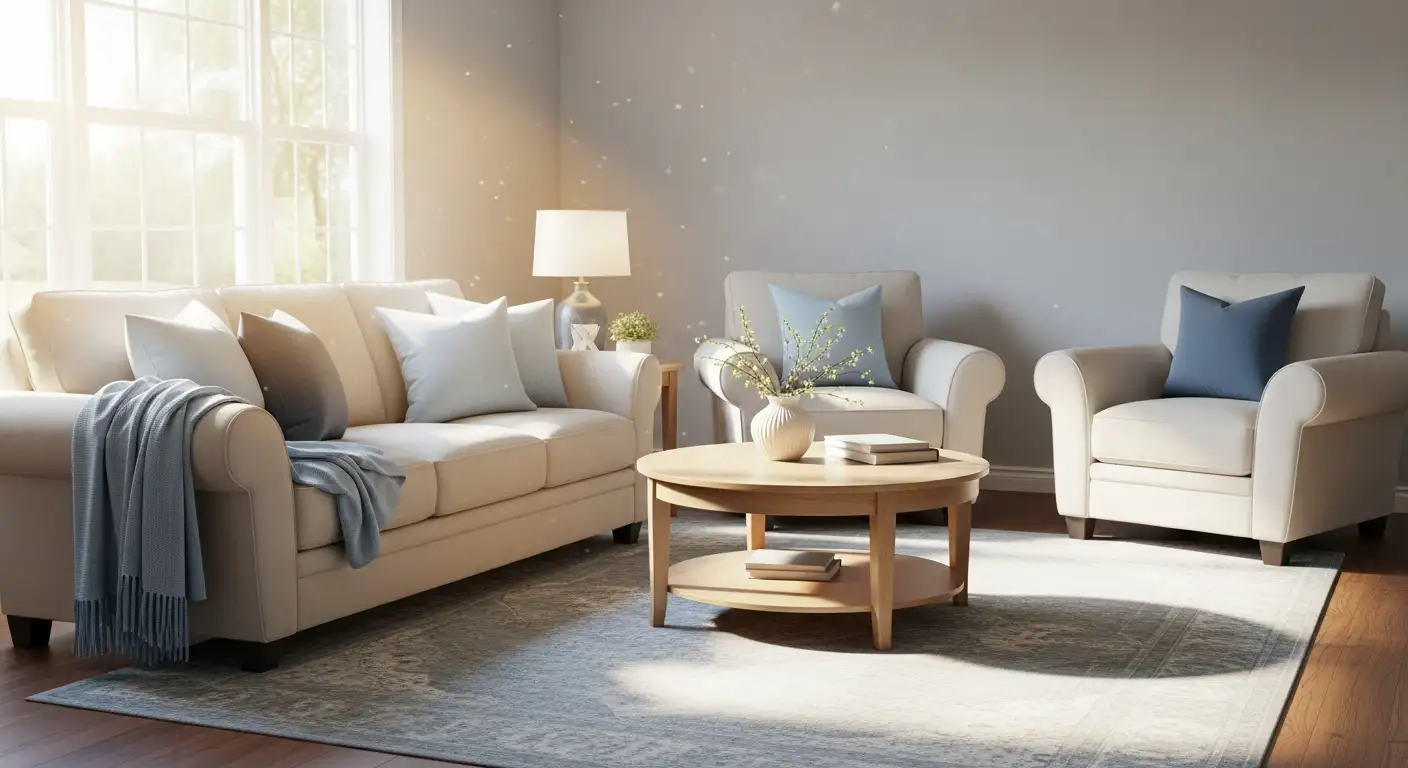Home Modifications for Aging in Place
Importance of Home Adaptations
Home modifications for aging in place are crucial for seniors aiming to maintain their independence. These adaptations not only enhance comfort but also ensure safety within their living environment. As indicated by RT Medical Health, thoughtful modifications can allow elderly individuals to remain in their beloved homes longer and avoid transitioning to assisted living facilities. This capability significantly contributes to an improved quality of life, enabling older adults to engage more fully in daily activities without reliance on others.

The emotional and psychological benefits of staying at home are also noteworthy. Seniors often face feelings of loneliness and isolation, particularly if they have mobility challenges or limited social circles. By making minor to substantial changes to their homes, they can create a familiar and supportive environment that combats these issues while promoting independence and confidence.
Key Areas for Modifications
When considering modifications for aging in place, several key areas warrant attention. These modifications can range from simple adjustments to extensive renovations, depending on individual needs.
Area for ModificationRecommended ChangesBathroomsInstallation of grab bars, walk-in showers, and raised toilet seats enhances safety and accessibility.KitchensLever door handles and touchless faucets can help seniors manage daily tasks with ease.Living AreasWider doorways, ramps, and furniture arrangements that allow for maneuverability improve navigation throughout the home.EntrancesInstalling ramps and ensuring no-step entries can facilitate mobility for individuals with walking difficulties.BedroomsLowering bed height or developing a bedroom on the ground floor minimizes risks associated with stairs.
These modifications are particularly important for individuals facing mobility issues. Installing aids, such as grab bars and raised toilet seats, can significantly improve the ease of movement within the home [1].
Incorporating smart home technology is another beneficial adaptation. Implementing features that assist seniors in navigating their homes can promote independence, while addressing safety concerns related to emergencies, maintenance, and security.
When making age-in-place home modifications, it's essential to consider the specific needs of the individual while keeping in mind both safety and comfort to foster a positive living environment.
Smart Home Technology for Seniors
As seniors strive to maintain their independence while living at home, smart home technology plays an increasingly significant role in ensuring their safety and comfort. These innovations offer solutions tailored to the unique challenges that elderly individuals face and help them age in place with confidence.
Enhancing Safety and Independence
Smart home technology can aid older adults in maneuvering easily at home independently without worrying about safety concerns such as emergency situations, access to home features, and risk of falling [2]. By integrating smart devices, seniors can enhance their living environments in ways that promote safety and independence.
Some key technologies include:
Smart DeviceFunctionalitySmart LightingAutomatically adjusts brightness for different times of day, helping to prevent falls.Smart LocksAllows for keyless entry, enhancing security and ease of access.Medical Alert SystemsProvides emergency assistance with the push of a button.Health Monitoring AppsTrack medication schedules and health metrics.Smart DoorbellsOffers video monitoring of visitors, ensuring security.
These devices not only contribute to overall comfort but also provide peace of mind for family members and caregivers.
Smart Solutions for Aging in Place
Smart solutions for aging in place address various home accessibility challenges faced by seniors. Devices such as smart blinds, smart televisions, and health technology watches facilitate daily tasks while allowing elderly individuals to live more comfortably and securely [2].
Examples of helpful smart solutions include:
Adopting these smart technologies can significantly improve the quality of life for seniors wishing to age in place. They help reduce the risks associated with everyday living while fostering an environment of independence.
For more resources related to independence and well-being, consider exploring senior telehealth services or intergenerational programs that support seniors in connecting with their community.
Financial Assistance Programs
Accessing financial support for age-in-place home modifications is crucial for seniors and their caregivers. Several grants and loans are available, along with assistance from nonprofit organizations to help ease the financial burden of necessary home adaptations.
Grants and Loans Available
Various government programs provide grants and loans specifically designed for home modifications. The U.S. Department of Housing and Urban Development (HUD) and the U.S. Department of Veterans Affairs (VA) offer valuable financial resources to seniors aiming to enhance their home environments.
ProgramDescriptionSpecially Adapted Housing (SAH) GrantProvides financial assistance to veterans to adapt their homes for improved accessibility. Learn moreSpecial Home Adaptation (SHA) GrantOffers funding for veterans who need to adapt their homes due to service-related injuries or disabilities. Learn moreTemporary Residence Adaptation (TRA) GrantAssists veterans who live in a temporary residence but need modifications for accessibility and safety. Learn more
These programs facilitate necessary changes that can help seniors live independently and safely in their homes.
Support from Nonprofit Organizations
Several nonprofit organizations also provide financial assistance and resources for aging individuals looking to modify their homes.
OrganizationDescriptionRebuilding TogetherFocuses on repairing homes and improving safety, particularly for low-income seniors. Explore programsModest NeedsOffers funding for people in temporary financial distress, including assistance for home adaptations. Read more
These resources can be pivotal in helping seniors adapt their living spaces, ensuring comfort, safety, and independence as they age in place. For further information, exploring options like senior downsizing and relocation services can also be beneficial.
Impact of Home Modifications
Home modifications play a crucial role in enhancing the living experience for seniors who wish to age in place. These adaptations not only improve safety but also significantly affect the level of care needed and the overall quality of life.
Reduced Care Hours
Recent studies have demonstrated that home modifications can decrease the number of care hours required for seniors. A notable study in Australia revealed a 42% reduction in care hours per week for community care recipients who had undergone home adaptations. The average age of these individuals was 72 years. Following the modifications, informal care hours decreased by 46%, while formal care saw a reduction of 16%.
Type of CareReduction (%)Total Care Hours42Informal Care46Formal Care16
These statistics illustrate how effective adaptations can create a safer environment, leading to lesser reliance on caregivers. Adjustments like enhancing bathroom safety, improving kitchen accessibility, and making hallways and doorways more navigable can transform the daily lives of seniors.
Improved Quality of Life
Home modifications extend beyond just reducing the need for care; they greatly enhance the overall quality of life for elderly individuals. Simple changes can facilitate a dignified and comfortable lifestyle, enabling seniors to maintain their independence and autonomy as their homes age with them [4].
The improvements not only focus on safety but also contribute to a more enjoyable living space. A well-modified home can boost a senior's mood, increase engagement in day-to-day activities, and reduce feelings of isolation. For instance, enhancing lighting throughout the house can make a significant difference in visibility and safety, while modifications to the kitchen can encourage healthier cooking habits, potentially addressing issues such as a reduced interest in preparing nutritious meals [5].
By investing in age-in-place home modifications, families not only prioritize the safety of their elderly loved ones but also enrich their living experience, making home adaptations a vital aspect of senior living.
Challenges Faced by Seniors
As individuals age, they often encounter a variety of challenges in their living environments. Two significant issues are safety concerns and accessibility difficulties, which can impact their ability to maintain independence at home.
Safety Concerns
Safety is a top priority for seniors living at home. Various factors can contribute to safety risks. These include emergency situations, potential accidents, and security issues. According to research, older adults are particularly vulnerable to falls, which can result in serious injuries and often lead to a decline in their overall health and well-being.
Safety IssuesDescriptionRisk of FallingSeniors may have mobility challenges, making them more prone to slips and falls.Emergency SituationsQuick access to emergency services may be limited without adequate safety features.Home SecurityConcerns about theft and fraud increase as individuals age.
Smart home technology can aid older adults in maneuvering their way easily at home. Solutions like fall detection devices, smart security systems, and automated emergency alerts can significantly enhance safety [2].
Accessibility Issues
Accessibility challenges arise as physical abilities change over time. Modifications may be necessary to accommodate these difficulties. Key areas often requiring attention include entrances, bathroom facilities, and kitchen design.
Accessibility ChallengesDescriptionEntrancesSteps or narrow doorways may hinder access for those using walkers or wheelchairs.BathroomStandard fixtures may not be user-friendly for seniors, creating risks for injury.Kitchen LayoutTraditional designs can be difficult to navigate, preventing smooth movement and usage.
Smart solutions for aging in place include devices like smart lighting, automated appliances, and motion sensors that can enhance a senior's ability to navigate their home independently. These technologies can simplify tasks and help older adults maintain their quality of life while living in their own homes [2].
By addressing safety and accessibility issues, age-in-place home modifications can significantly improve living conditions for seniors, allowing them to maintain their independence and dignity.
Companionship and Support
Maintaining companionship and emotional support for seniors is crucial, especially those living alone. Addressing feelings of loneliness and providing emotional care can significantly enhance their quality of life.
Addressing Loneliness
Seniors often face challenges such as loneliness and isolation, particularly when they live at home alone. Factors including the inability to drive, children moving away, or losing a significant other can exacerbate these feelings. Companionship plays a vital role in helping seniors cope with these emotions. Studies reveal that consistent social interactions can sharpen their mental wellbeing and improve overall health.
Creating opportunities for social connections can include:
MethodDescriptionIntergenerational ProgramsInitiatives that connect seniors with younger generations promote interaction and understanding.Local Clubs and ClassesEngaging in hobbies or classes can help establish friendships with similar interests.Volunteer OpportunitiesParticipating in community service fosters a sense of purpose and belonging.Regular Family VisitsSchedule frequent family gatherings to maintain strong familial bonds.
Providing Emotional Care
Emotional support is equally important for seniors striving for independence and comfort. Thoughtful home adaptations can facilitate a dignified lifestyle, further enhancing emotional well-being. Simple modifications, such as improving kitchen accessibility, enhancing bathroom safety, and installing smart home technology, can alleviate stress and promote autonomy.
Emotional care can involve:
Support TypeDescriptionMental Health ServicesAccess to senior-specific mental health services provides counseling for anxiety and depression.Holistic Wellness ProgramsEngaging in holistic senior wellness programs helps seniors maintain physical and emotional balance.Regular Health ScreeningsKeeping up with age-related health screenings allows caregivers to address health concerns promptly.
With appropriate companionship and care strategies, seniors can enjoy enhanced emotional support and well-being, allowing them to thrive in their own homes.
References
[2]:
[3]:
[4]:
[5]:



